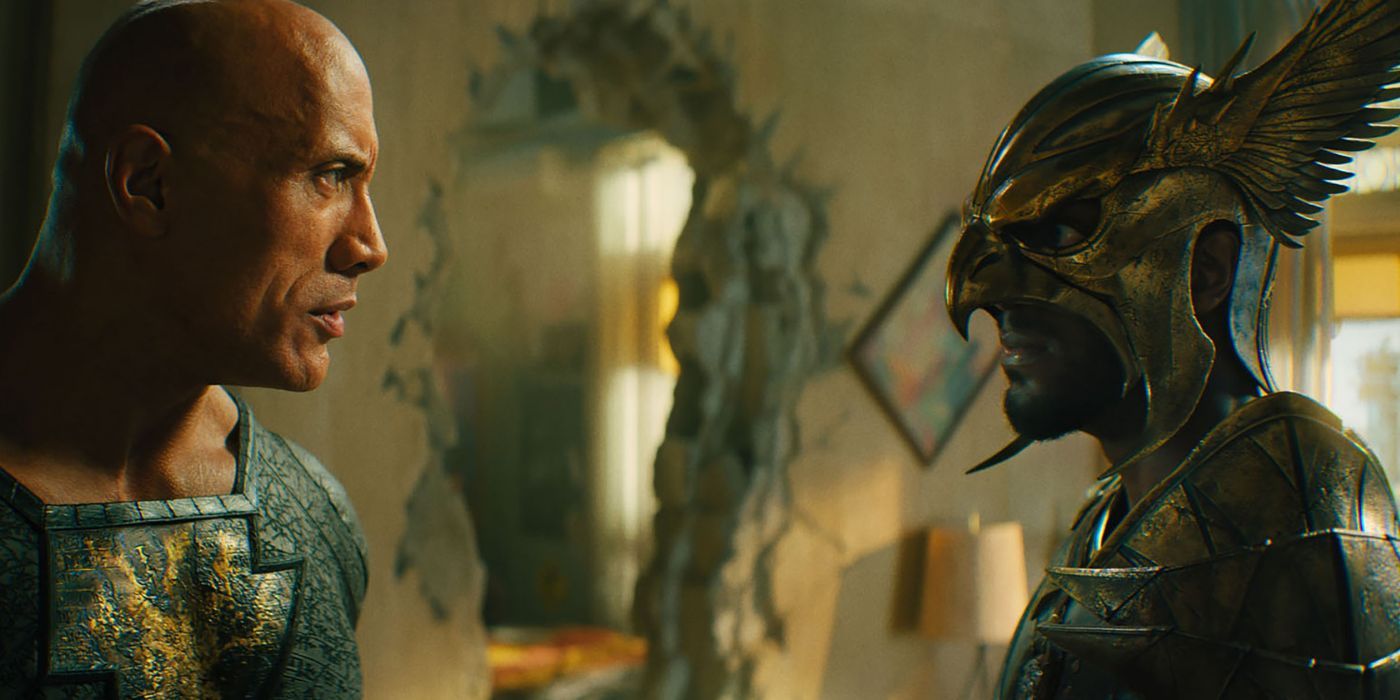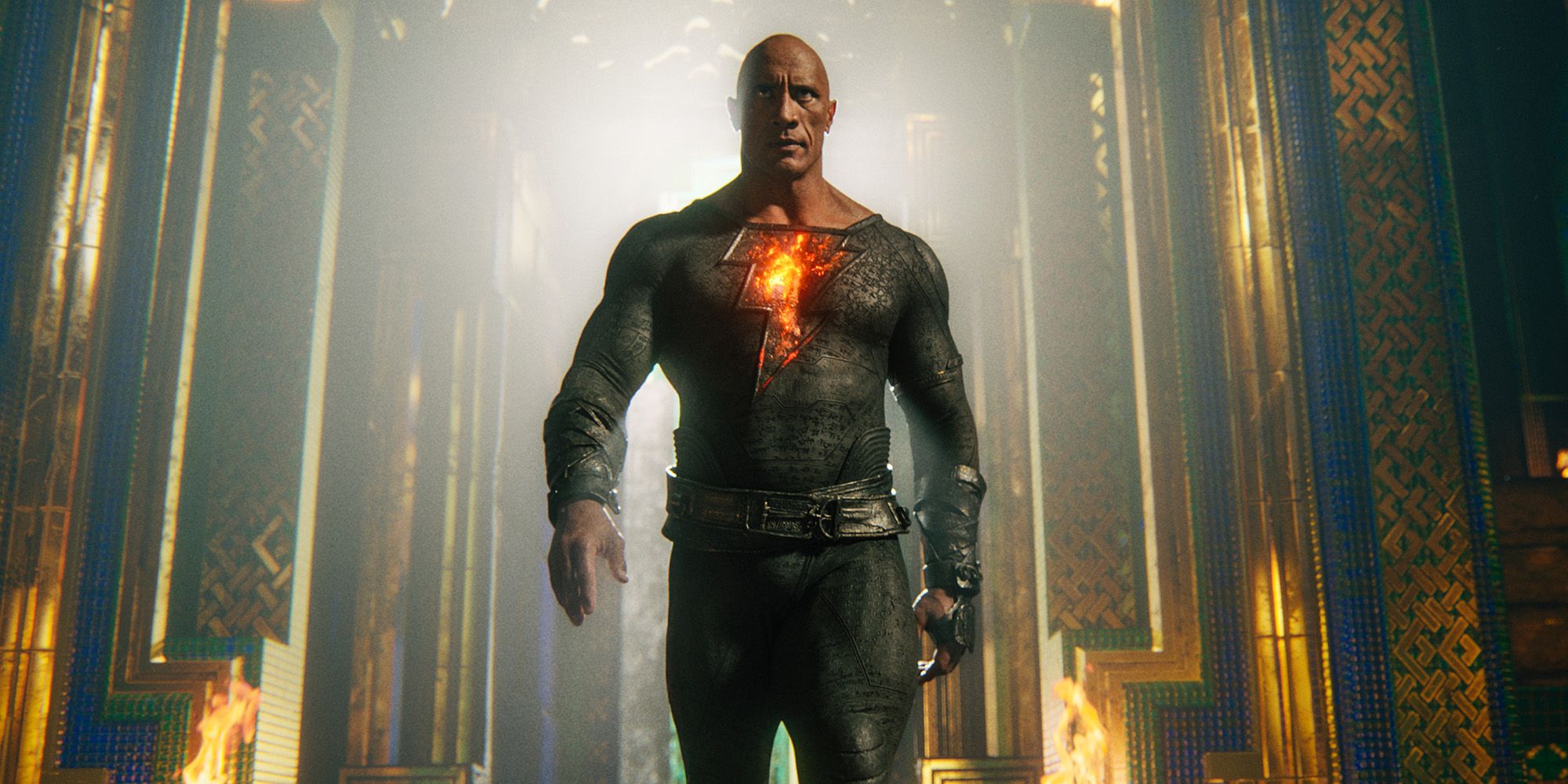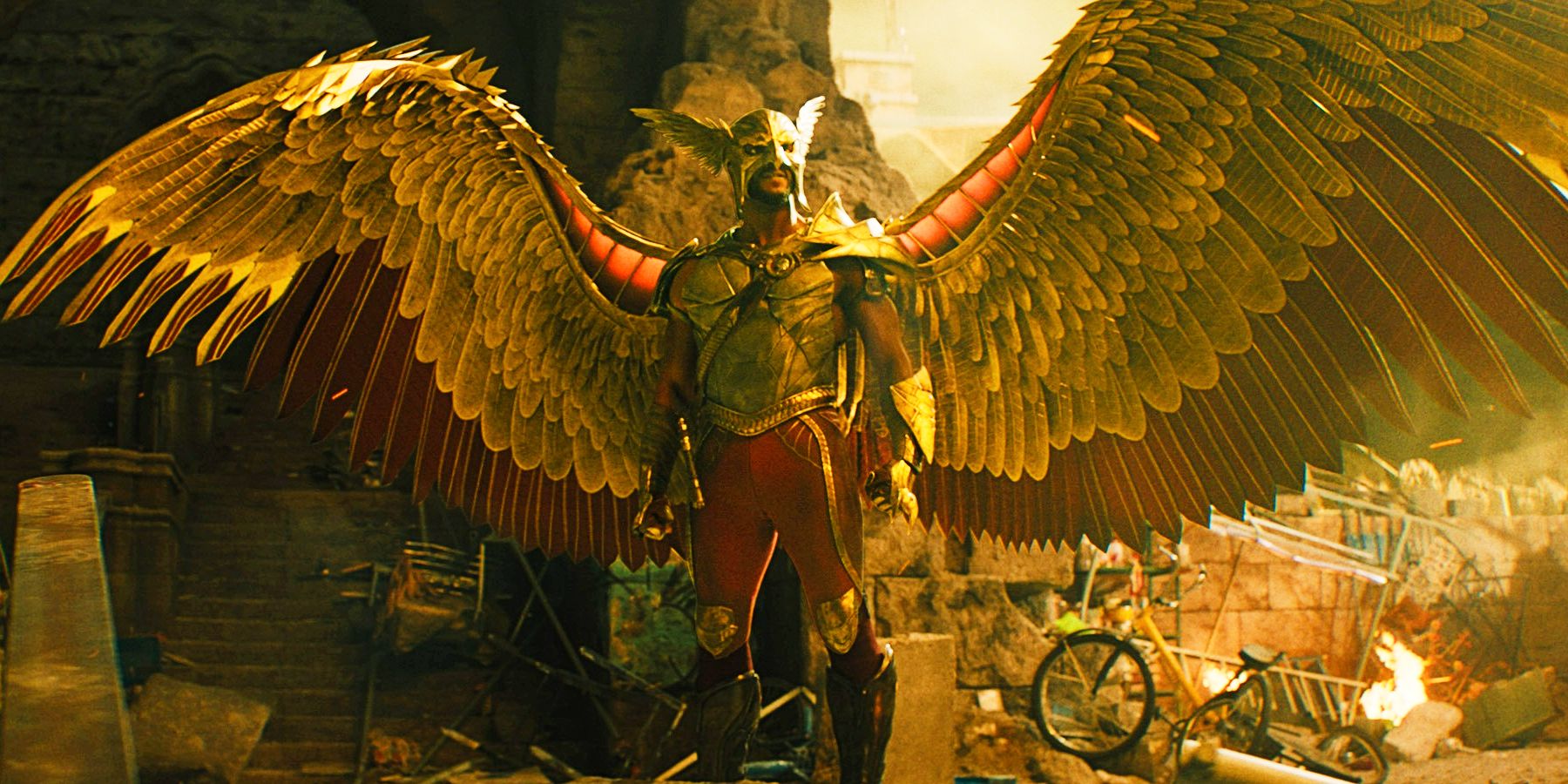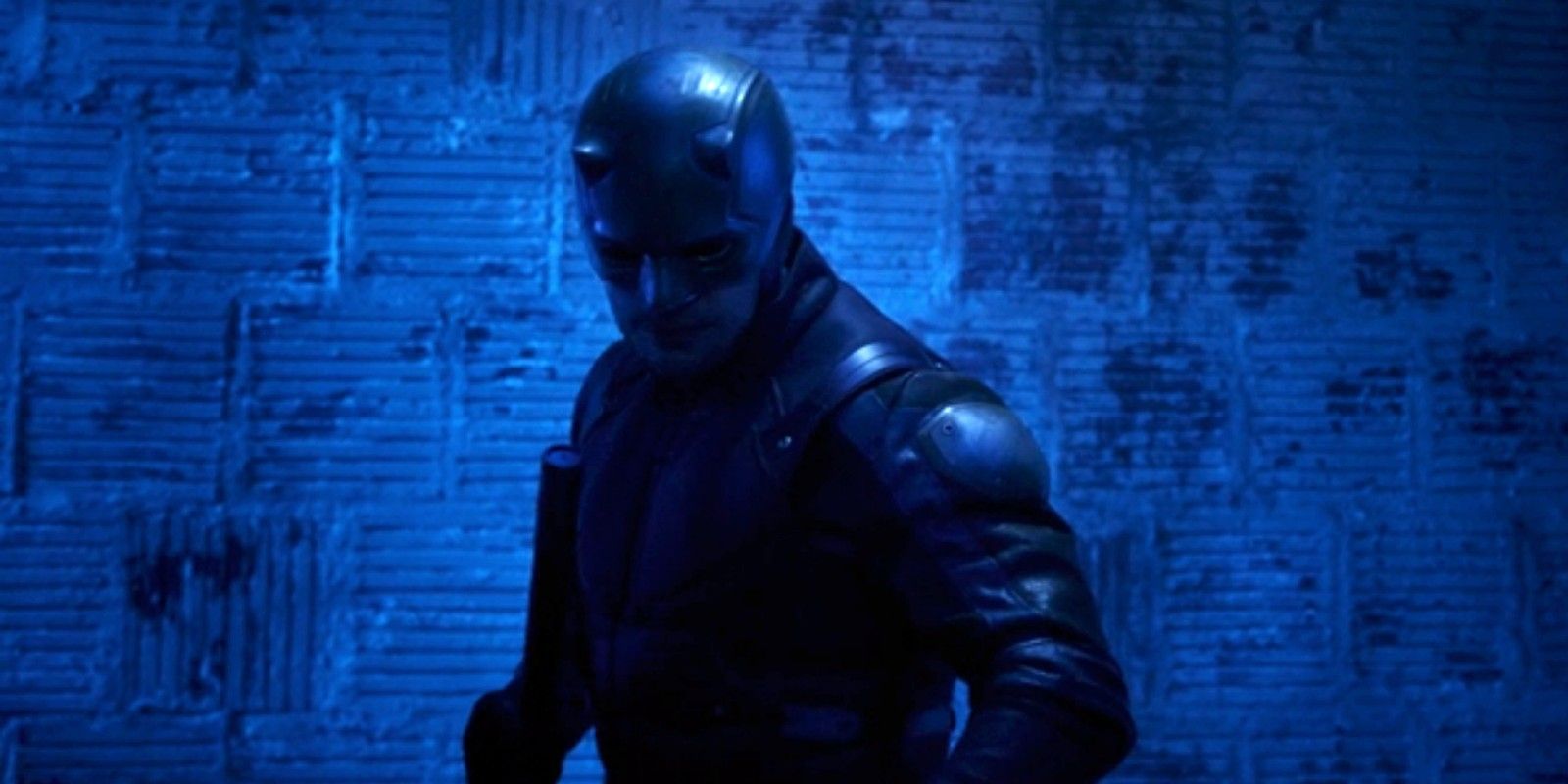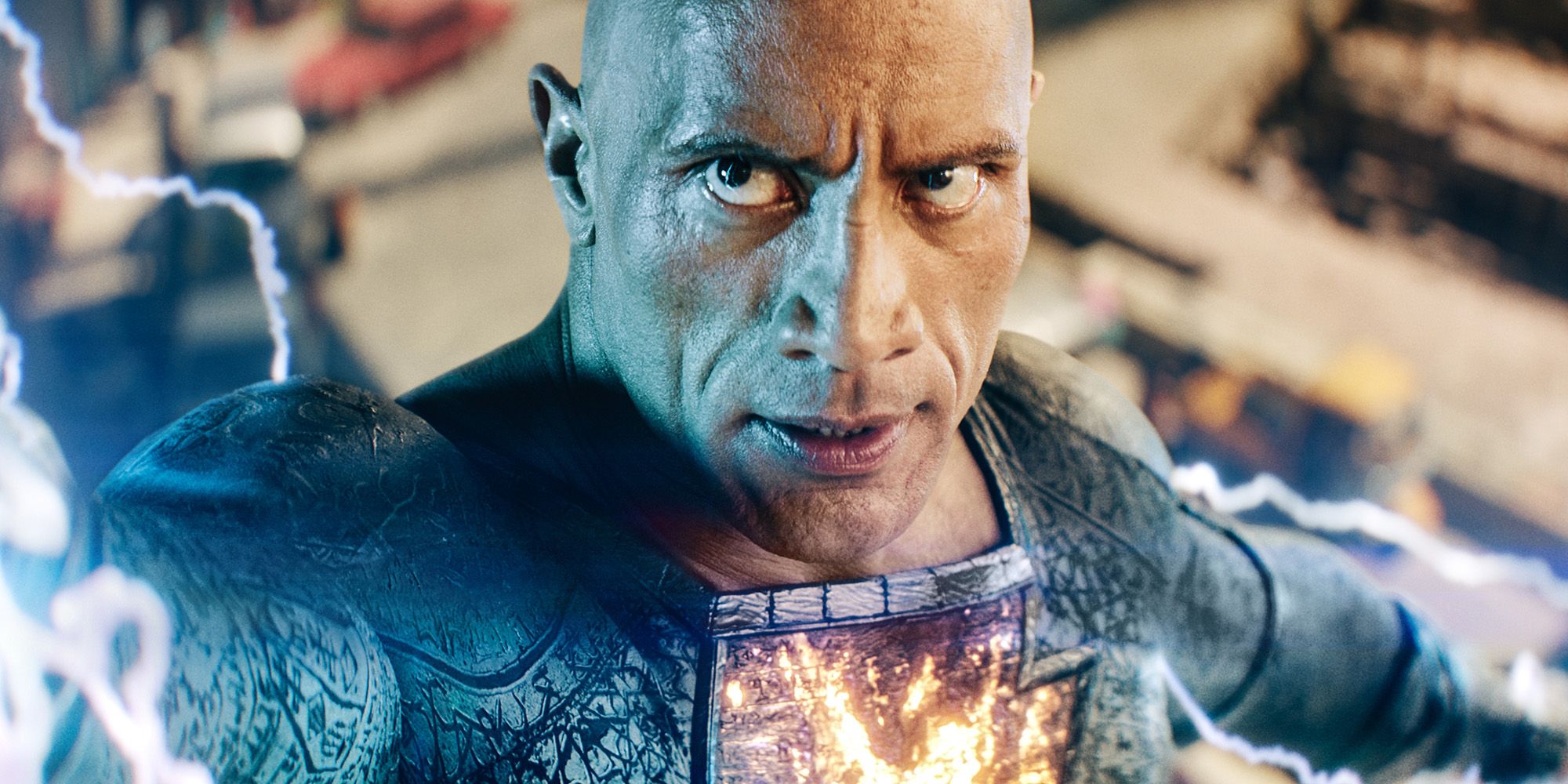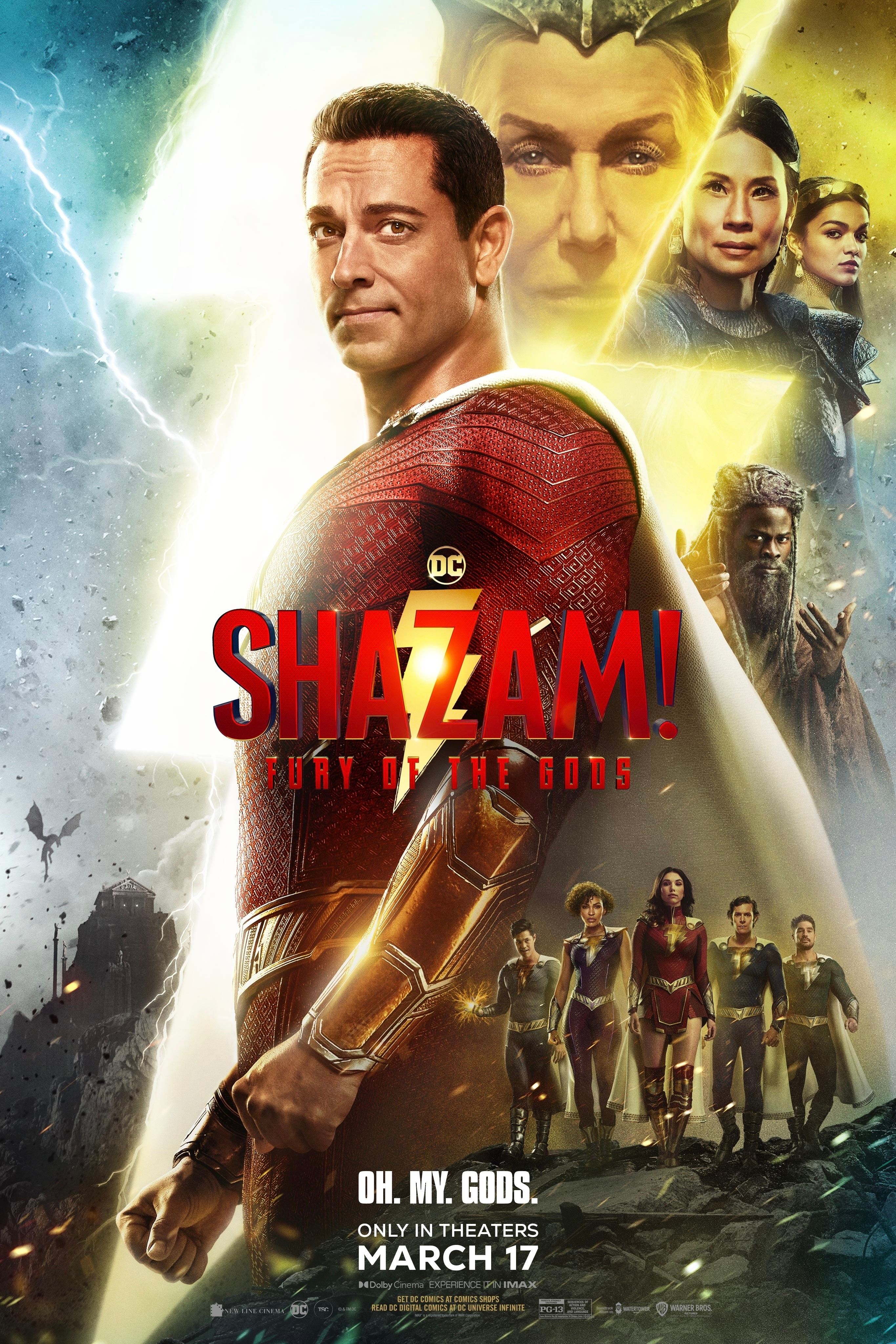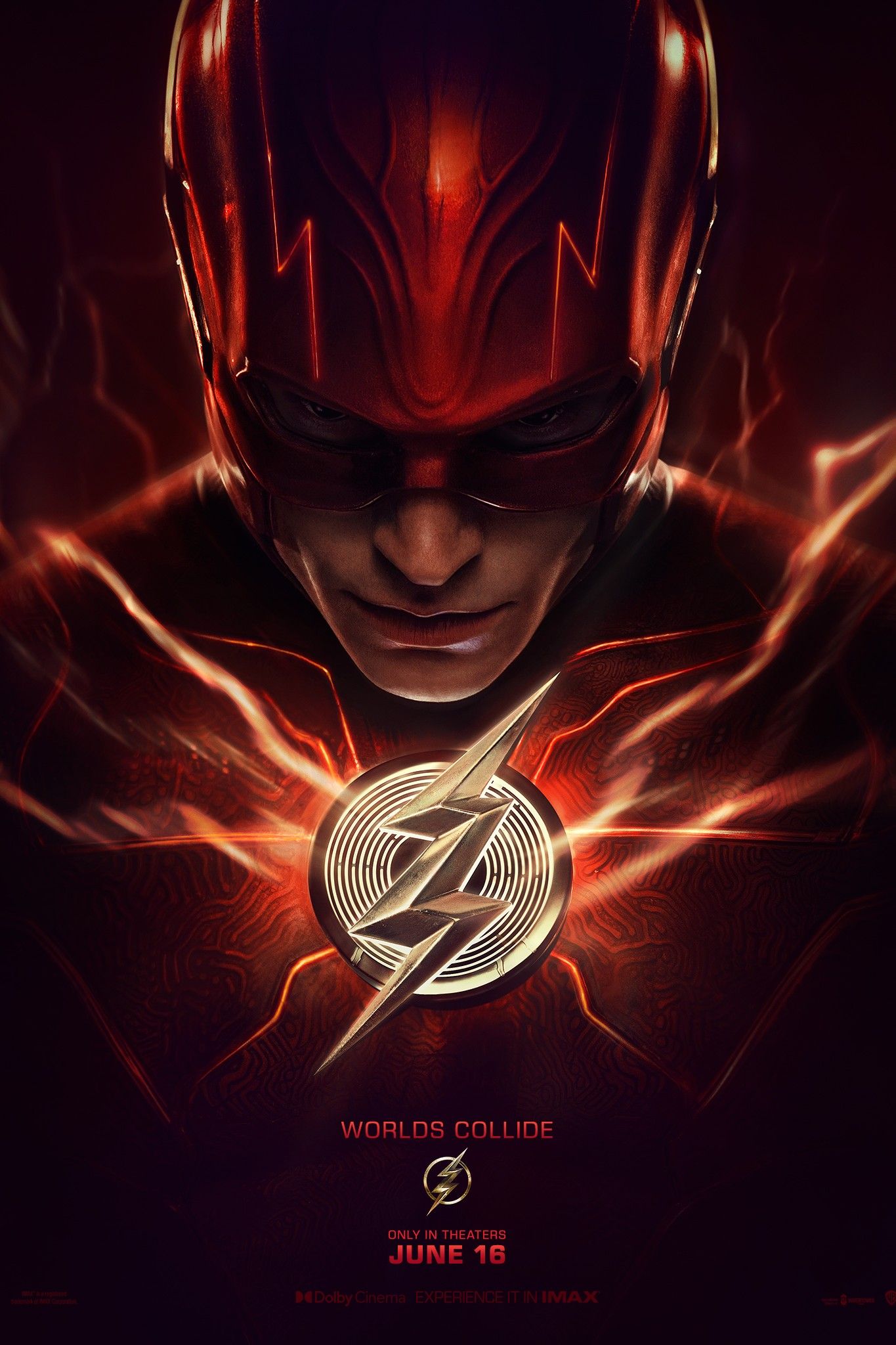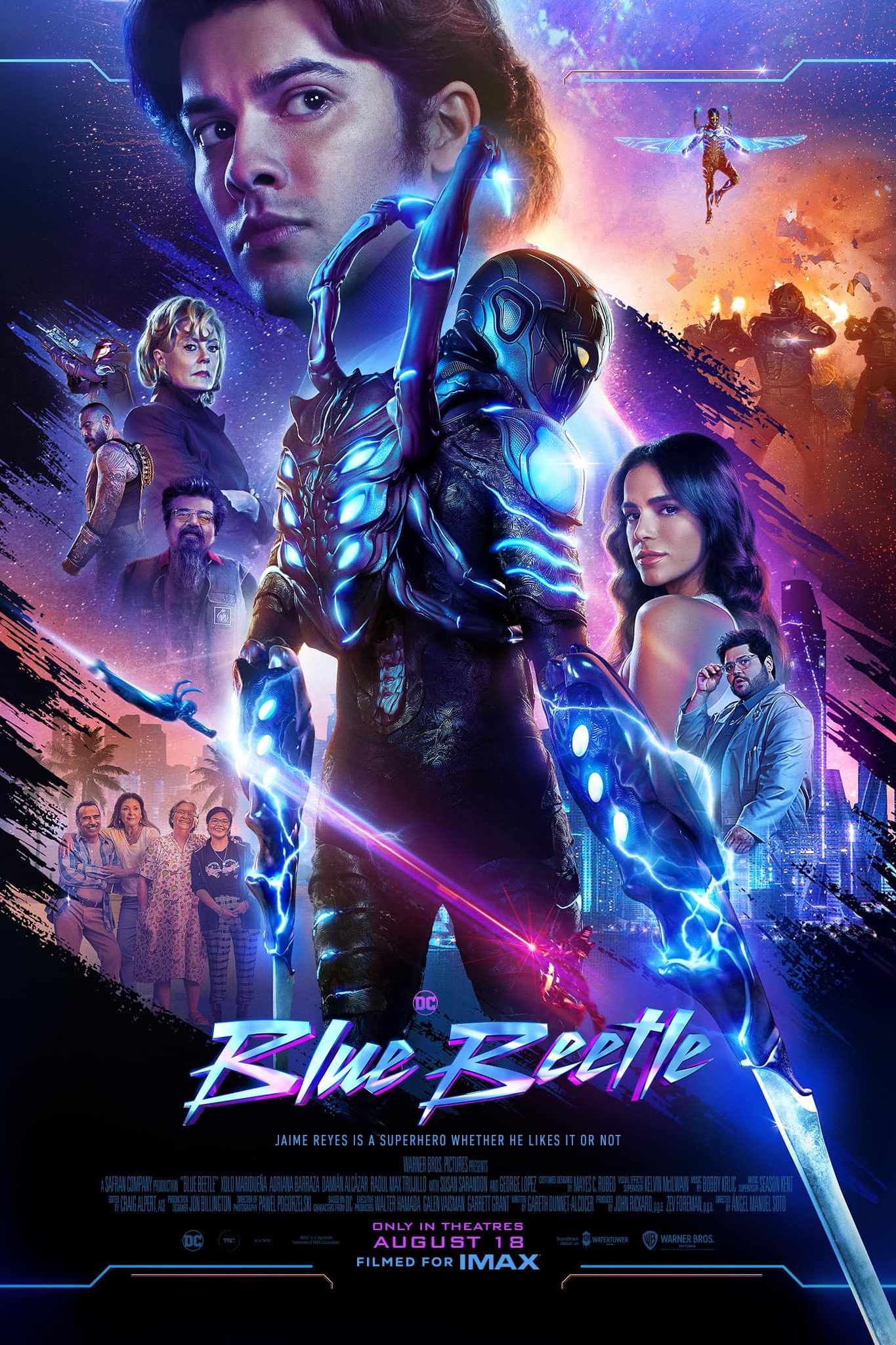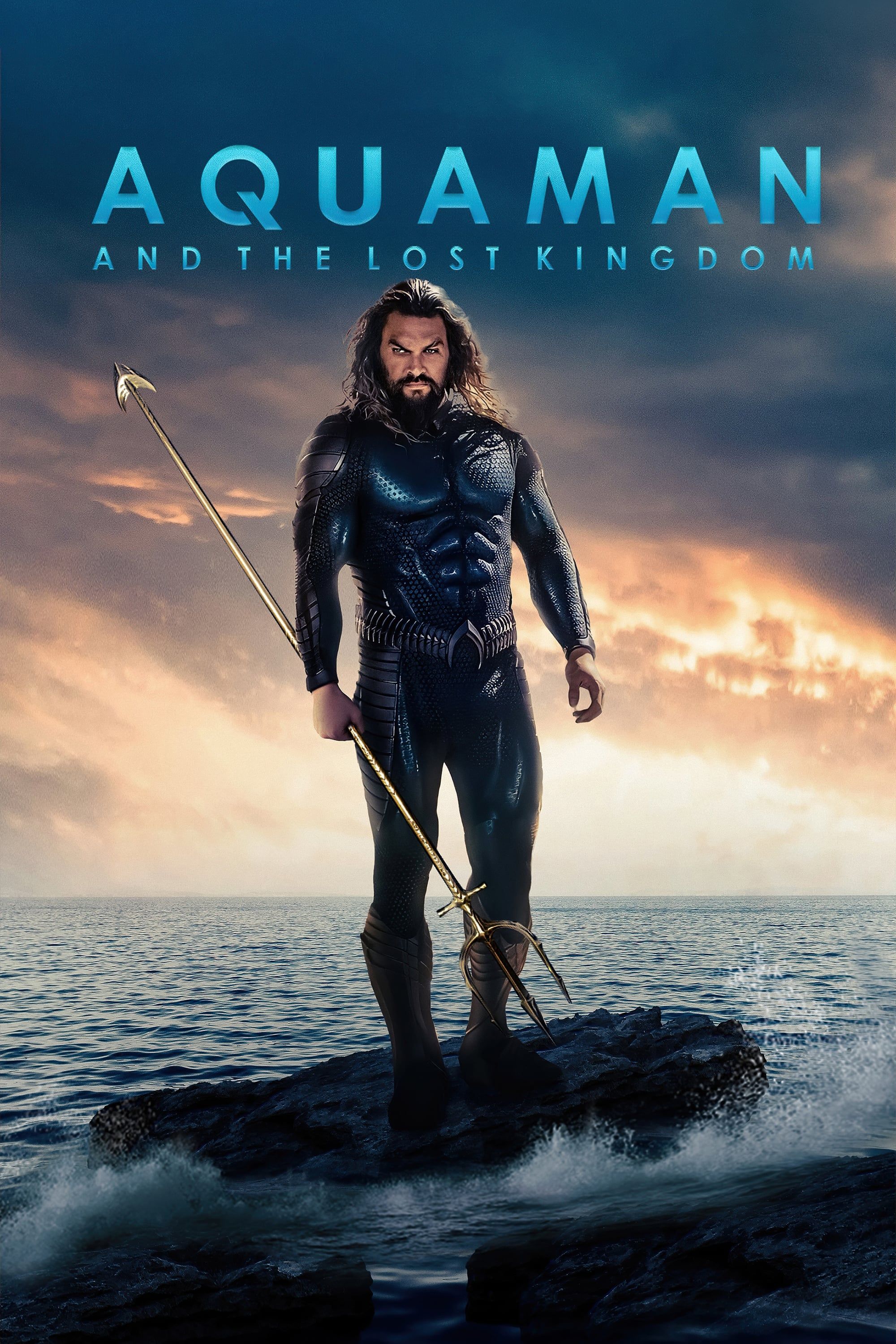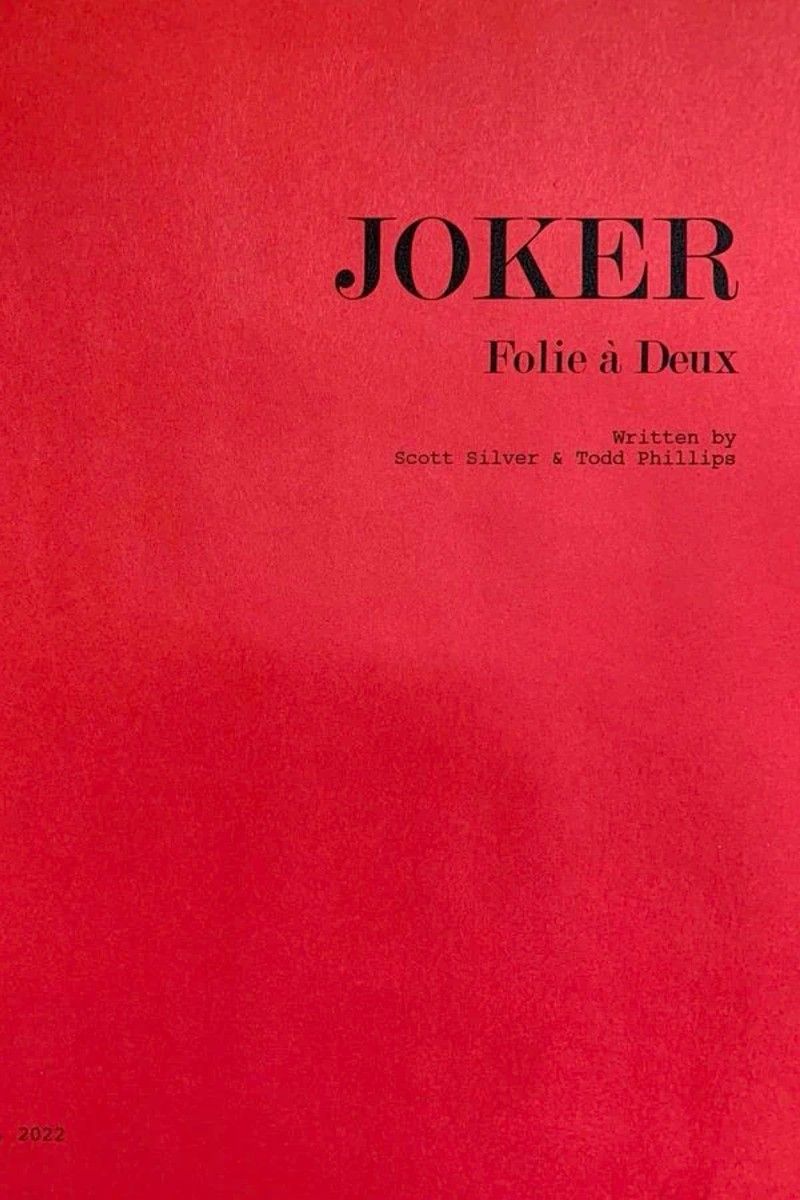Black Adam has grossed over $350 million worldwide, marking a definite shift in the hierarchy of power in the DC Universe. Black Adam introduces the titular anti-hero and the Justice Society of America, while also bringing Henry Cavill's Superman back into the fold. Black Adam features some of the most brutal action sequences in the DC Universe, with the anti-hero literally tearing an enemy in half. The iconic action sequences in Black Adam were designed by industry veteran Chris Brewster.
Brewster has had a hand in countless superhero action sequences while working on Netflix's Daredevil, Ant-Man And The Wasp, Loki, and many more DC and Marvel projects. Brewster has an impressive understanding of action sequences and stunt work from his work as a stunt performer, stunt double, fight choreographer, and stunt coordinator. Brewster's work on Black Adam brings the action and storytelling to a new level, with each fighting style uniquely tailored to fit the character that uses it.
Screen Rant spoke with Brewster about designing the brutal and dynamic action in Black Adam. He explains how each character's fighting style further develops their story, how hard Aldis Hodge trained to be able to fight like Hawkman, and which was the hardest action sequence to put together. Brewster also breaks down the difference in fighting style between Marvel's street-level hero Daredevil and the veteran Avenger Captain America.
Chris Brewster On Designing The Action For Black Adam
Screen Rant: When we talk about action in Black Adam, I think those two things go hand-in-hand. One of the things that I found really interesting about this film is that you guys try to do as much as you could with the stunt team and in-camera before doing CG first. Can you just walk me through the process of one of these action sequences?
Chris Brewster: To me, I think the ultimate difference between CG action that works and the action that involves CG that really pulls you in, is exactly what you said. Sometimes it starts off, and they have an animation, that they just animate the entire piece. They go, "Okay, we need this moment, this moment, this moment." And to me those sequences never really have any weight to them. You don't feel what the characters are feeling. You feel very pulled away from it. Whereas when you get the opportunity to shoot real live-action and then enhance it within CG? Completely different look. To me, I think action that is just real action that's been enhanced will always be a hundred times better than just animated.
Before we even started the stunt team on this project, Jaume, the director, had come up with an animated version of just about every piece of action. Which was really helpful because it showed us what he wanted, what his vision was. Ultimately our job as a stunt team and the action designers is to take his vision and make it come to life. He would show us what he wanted, and then we would basically design all the action, start on the ground. We'd take all of the characters and choreograph the action. Whenever it's animated its punch, punch, punch. We would try to find the realness behind it. Someone like Black Adam wouldn’t block. He doesn’t have to block. He’s invincible. A punch would come in, he'd eat one punch and then hit them 10 times harder. Whereas somebody like Hawkman, he's lived a hundred different lives and each life he learns different martial arts and different fighting abilities and everything like that. S0, somebody like him, he might try a certain type of move from Weng Chun and if that didn't work, then okay, he would change his game plan. And go to some Capoeira and try this. If that doesn't work, okay. We'd have to see and work from style to style to style.
We design all of the action on the ground. But then we would basically show that to our rigging team and our riggers would literally figure out how to move them, do the exact same action, but in the air. We would be launching them at each other while they were doing the same techniques, then we would add the elements of the camera. How we would shoot it and there's always tricks when you're filming something. If the camera kind of goes with the action and gives you a longer shot it gives you certain things. But if you counter it, that'll make it much faster; more dynamic.
We try to find the coolest way to capture every moment of each piece of action. We would basically do all of that, then we would take that back to Jaume and get notes. I mean he had a very, very strong vision for exactly what he wanted. He would watch the things and say, "Okay, I love this, love this. Oh, let's tweak this, let's change this." Then we would go back and re-tweak it. Basically by the time that we started filming, everybody was on the exact same page as to exactly what we were going to do, where the cameras were going to be, how the wire work was going to happen. It just made for a really, really smooth filming experience.
That's incredible. Can you talk about the different approaches to action with a character like Black Adam versus Hawkman? You used a little bit of an example with the power. How much research did you actually have to do for some of these characters in order to understand what you're looking for visually?
Chris Brewster: Absolutely. I mean as action designers, we don't just make movement for the sake of movement. To us, we are telling the same story in the script. Instead of a line of dialogue, we have a punch or a grab or a kick. Every move we do has to tell a story. It's really imperative that we know the characters.
Black Adam, up until he meets Hawkman's mace, he's never ever been hurt. Once he had a superpower he'd never ever been hurt. He is basically indestructible. He's the ultimate, ultimate character, so he doesn't need a defense. He's never had to block anything in his life. He doesn't slip, he doesn't move out of the way. Someone’s going to throw a punch. He's probably just going to beat them to the punch, he can see the punch coming, [and] he moves so much faster than them. That as they go to move he's already smashed them, and they've turned to dust.
We had to create a style-less style for Black Adam because he doesn't have the need for any martial art. Martial art is created to basically enhance your fighting ability, but he just naturally is built with the highest level of that ability. He doesn't need a martial art. He just is in.
We came up with how do you fight if nothing is a challenge for you. It's a very effortless but really cool and exciting style. Hawkman is the exact polar opposite in that he has lived life after life after life, he's constantly been reincarnated. With each life came new skills. In order to show that vast array of skills, we tried to pull from the most unique and the most polar opposite styles out there. We would take a really soft kung fu, Wushu Chinese art and then immediately jump to a very hard style Japanese art. From Wushu to Shito-ryu karate. Then we would jump from that to Capoeira, which is a Brazilian dancing martial art. Then obviously there's a lot of weapons work, so we had to really find elements of almost medieval weaponry, combined with different centuries of styles of weapons manipulation. We literally just reached out for the most unique and different styles and tried to combine them in a very fluid and almost seamless manner.
Another character I want to talk about a little bit is Cyclone because I noticed that, first of all, it's not a power we see a ton of in really any superhero genre. I know we had Storm way back in the early 2000s. But this is really something new for this era of superheroes. I noticed the way that she moves with her power is very graceful and very dance-like. What went into that decision to make Cyclone move that way?
Chris Brewster: Well, basically for Cyclone, it's telling a story of her character within her movements. She can control the air. Since she can control the air, we knew immediately she had to be able to go up in the air, spin through the air, and land. Everything had to be graceful because with air working with you, you don't have to worry about gravity. You can use the air to pick you up, you can use the air to drop you down softly.
To show that she is in control, we knew that we wanted a certain level of grace to it. Basically, the stunt team created the fighting style for her movements and then once you put her on a wire we created her midair movement. Which was very dance and acrobatic influenced.
We had a few different stunt doubles for her, one of which was this incredible dancer. The other was just an amazing stunt woman. They both brought their own elements to the character as well. I feel like we as a stunt team and as action designers, we create the skeleton for each character and then between the stunt doubles and obviously the actors, they build the body on top of it.
Quintessa definitely came in, and [they] had so many ideas. It's really, really awesome when actors come in having already done all of their homework and have a vision that they're trying to create. I mean, Quintessa came in on day one and had videos of different dancers that they liked. They had all these concept videos of silks; just silks all around people's arms and the fluidity of the movement. It was a really cool collaborative combination of everybody putting ideas in and just building a character that was unlike any character we've seen so far.
The aesthetic of Aldis Hodge as Hawkman was also something brand new. I know you trained with Aldis for about three months to get that performance spot-on, and he's fantastic in the film. But you trained him for about three months, whereas Dwayne Johnson picked up the action sequences pretty quickly. Can you talk to me about your experience working with Aldis, and how much of the Rock knowing the action sequences is attributed to his background in pro wrestling?
Chris Brewster: Both Aldis and Dwayne Johnson are absolutely legends. I have met very few actors who train as hard as Aldis. A lot of people will say, "I trained for the role, I went to a personal trainer and did an hour three times a week." No, no. Aldis? Eight hours a day for three months. He was meeting us at the gym in the morning doing all the lifting and all of the physique stuff. Then he'd come to the stunt gym immediately afterwards and spend hours and hours just drilling basic techniques. Everything from hitting heavy bags to sparring to weapon work to all kinds of stuff. Before we even started on his choreography.
He literally wanted to learn every martial art he possibly could. We were drilling Wushu basics, we were drilling Karate basics, we were drilling Capoeira movements. I mean literally everything we could think of. We were doing stick fighting drills. Everything just piled on top of each other. He worked harder than I can even put into words. It was amazing. Which literally was necessary because there's no other way. There's no way an actor could come in and act like they knew a magnitude of martial arts if they didn't put in the time and effort that he put in. I mean, he literally was able to say, "Okay. Do you want this kick to look more Taekwondo or more Muay Thai?" And be able to change it as he threw it. He became the character. He literally had so much of an arsenal by the time we went to camera that he could make such quick adjustments to his technique. It just worked perfectly.
With Dwayne, it was almost the exact opposite. Not because he didn't want to put the effort in, [but] he is a very busy man. We only got about two weeks with him to prep the entire film. In that two weeks. Again, he was just all over; doing all kinds of stuff. Most of the action sequences that we had with him, we had maybe a day to prep him for each one of the action sequences. He just has this incredible ability to launch an entire piece of action, and he has it. Not only does he have it but his background and his just amazing level of performance brings this incredible on-camera ability to take even the most basic technique, the basic pose, the basic anything, and make it super, super cool.
He would have these moments where we put so much time and effort into thinking of, "Okay, when this happens he wouldn't move as this punch comes in. It would just hit the guy before he can even get to him. It would just be a very short punch, he wouldn't have to torque his body into it. Just immediately." We put so much thought into the movement that he had this ability to amplify every one of those moves by going, “Ok, I love that, but I want to make it look like I'm not going to do that. When he does this, I'm going to start to turn around and then as he goes to move it's like I see the move out of my peripheral." He'd just find these things, and everything he does is cinematic. Everything he does is a trailer moment. Whether it's a big move or just turning his head. He does it in such a cinematic way, you're like, "That's it. I just saw the movie live."
That's so cool. What was the hardest action sequence to put together? Through preparation and then through execution.
Chris Brewster: Well, every different action sequence had a completely different challenge. All of the midair fight sequences, pretty much the entire JSA fight where we meet the JSA for the first time. That one was a challenge because Jaume he imagines exactly what he wanted to see with that fight. He had it animated and we basically had to figure out how to take that animation and make it live. Make human bodies actually travel as fast as cartoons, how to make somebody hit somebody so hard that their body just ratchets through walls and through cars and through all the stuff. How to do it in a safe way.
Ultimately, we’re working with god powers here. For a human body to actually do the things that you can animate, it's borderline impossible. We had to find that perfect balance of exactly what we can do and make it as dynamic and exciting and just intense as possible. But to keep everyone safe so that we can shoot an amazing action movie. Then everybody will go home to their families at the end of the day. That was a huge challenge. But then there was a really cool dichotomy between that and the big prison escape. One of them is nothing, but we're flying through the air, it's this pure culmination of live action stunts with VFX with everything put together.
Whereas the prison escape, that's live action. That is as real and gritty as it gets. For that sequence, we were shooting, every take was a master. We ran that entire fight as one take every time we did it. We shot it for five days. It was a lot of action. We were playing for Phantom cameras and Phantom cameras shoot at 1200 frames per second. If you are not so, so precise in the movement, it's going to look like a massive mess. There'll be a millisecond when you play it back on a Phantom, that millisecond is like eight seconds. It could be an eternity in between the hit and the reaction.
We needed our stunt team to be 100% every single take for five days straight. I mean we brought in some of the best stunt performers in the entire world. Even with that I was like, "This is going to be a challenge." In order to make every take perfect, I mean it's borderline impossible, but the team did it. The guys did it. I mean there were so many shots that I'm like, "This one's impossible. I mean on Phantom cameras, the only way to do it is if they really hit each other. I'm not going to let them do that, so we have to try to do this and try to do that.” We would do two or three takes and all of a sudden, that's perfect. That was the impossible take. I mean we just nailed it. Amazing.
You guys did an absolutely incredible job with the action in this film. Can you talk to me about working with the cinematographer, Lawrence Sher? Because like you said, this needed to be precise. Can you talk to me about that challenge as well?
Chris Brewster: Ironically, working with the DP usually comes with challenges. Obviously everybody working on a film set is very good at what they do, but a lot of times it's like every department is focused on themselves, and they don't necessarily overlap too well. But this was one of those cases where everybody overlapped really, really well. Lawrence, he's a joker. I mean the guy knows how to shoot anything. The guy's an absolute legend.
Normally when working with somebody of that stature, somebody who's literally the best at what he does, the challenge would be trying to convince him, “Hey, I think we should shoot this a little bit this way.” The action scene, action designers, we normally know how to make the action look the best on camera, that we perfect, that's our art. Sometimes it's like, "We shot the pre-viz and we shot this move right here and it plays really, really well from right here." A lot of times the DP will be like, "Hmm, no, I'm not going to shoot it your way. This is my film, I'm going to shoot it my way."
But he was so humble and so amazing to work with because every idea we had he'd be like, "I love that. Yeah, let's do that." Not only would he be open to our ideas, but he would elevate each one of our ideas. He’d be like “I love that we should do that, but have a camera here. But what do you think about having this move happen and having this camera follow him all the way to this, so we can cut to this shot then we can do that." He was just always just one step ahead. I mean he was really, really awesome to work with.
You're responsible for designing some of the best superhero action sequences we've seen on television or film. From Daredevil to Black Adam, you capture the tone of the character's fighting style and action sequences. Is there a character that you haven't gotten a chance to work on, but for whom you've already designed the action sequences in your head?
Chris Brewster: There's quite a few. For me, as an action designer and getting more into second unit directing, my specialty is exactly that. It's telling the story through the movement of each character and breaking down each character into how they would stand, how they would fight, and what kind of position they would be in. A more aggressive fighter will lean forward.
The difference between Captain America and Daredevil is that Captain America is the perfect human being. Everything's the prim and proper way, so it's very chin up, chest out. He's a matador, he holds himself very upright at all times. Whereas Daredevil is almost more animalistic, he's more leaned forward and holds himself more like a boxer. Because he doesn't want anybody to know that he's blind. Matt Murdock is blind, but nobody knows that Daredevil is blind. Even though he's using his ears to actually hear where everybody is and using his other senses, he will still make sure he looks somebody dead in the face just to get that false idea where they don't think that he's blind. From how somebody moves to how they stand, those are the key elements that we use as action designers to tell our story.
That's so cool, man. I know that you're directing the second unit for Wolf Pack. For longtime Teen Wolf fans, what can they expect from the action in that? What can they expect from Teen Wolf and Wolf Pack?
Chris Brewster: Well, we just finished the Teen Wolf Movie. All of the fans will be very, very happy. I worked on the Teen Wolf TV series for pretty much the entire run. I'm not going to lie, I watched every single episode of the show, and I'm a huge fan as well. As a fan of what went down, as a fan reading the scripts, it is exactly what the audience wants. It's going to make everybody really, really excited. It's really well done. Jeff Davis is an absolute genius. Watching the way he operates and watching the way he comes up with ideas [is great]. The script is always amazing, but then the story and everything evolves just day to day, where he's like, "Okay, that's good. Let's add this." He just finds ways to make everything better.
The actors are amazing. All of the fans will be very, very happy with the movie. If you like Teen Wolf, you're absolutely going to love Wolf Pack. It's a very fresh, new look on werewolves. It's a totally new story. I thought that it was going to be very similar to Teen Wolf, but it's not. Whole new story, whole new energy, whole new vibe. I mean there is so much going on that every time you think you know what's happening you're completely wrong. Luckily, I'm getting to second unit direct that. I can guarantee that the action on that is going to be out of this world.
It sounds like a great jumping-on point for new fans of Teen Wolf, and an enhancement for a lot of those fans that are coming over from the other Teen Wolf series. You also did the stunts for the Teen Wolf movie that's coming out on Paramount+ pretty soon, and most of all the cast is returning for that, which is incredible.
Chris Brewster: It's like they didn't even miss a beat. It's so cool to see them come back to the characters that we all know and love and just immediately fall back into that persona. It's awesome.
About Black Adam
Nearly 5,000 years after he was bestowed with the almighty powers of the Egyptian gods -- and imprisoned just as quickly -- Black Adam is freed from his earthly tomb, ready to unleash his unique form of justice on the modern world.
Check out our other Black Adam interviews here:
- Cast at SDCC
- Justice Society
- Dwayne Johnson
- Pierce Brosnan & Aldis Hodge
- Sarah Shahi & Mo Amer
- Noah Centineo & Quintessa Swindell
- Editor Mike Sale, ACE

